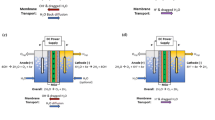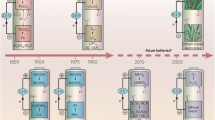Abstract
In this work, the synthesis of associative electrolyte copolymers via the RAFT polymerization technique in solution media is reported. Well-defined polyelectrolytes as multiblock copolymers or multistickers were prepared. Previously, an hydrophilic macroRAFT agent of a statistic copolymer P(MAA-co-EA) was prepared using methacrylic acid (MAA) and ethyl acrylate (EA). Afterwards, chain extensions of the macroagent were carried out by further polymerization of stearyl methacrylate (SMA). At the end, multiblock copolymers (heptablock) were obtained by insertion of three blocks of SMA. All the polymerizations showed a living behavior with the resulting polymers exhibiting a narrow dispersity (Đ ≤ 1.5). The synthesized polymers were characterized by nuclear magnetic resonance (NMR), size exclusion chromatography (SEC) and rheological measurements. Furthermore, it was demonstrated that the insertion of hydrophobic segments into the multiblock copolymers increases considerably the viscosity of the associative electrolyte polymers.







Similar content being viewed by others
References
Shaw KG, Leipold DPJ (1985) New cellulosic polymers for rheology control of latex paints. J Coat Technol 57:63–72
Evani S, Rose GD (1987) Water soluble hydrophobe association polymers. Polym Mater Sci Eng 57:477–481
Byham DE, Sheppard EW, Chen CSH (1980) Oil recovery process involving the injection of thickened wáter. US Patent 4 222 881
Stratton CA (1971) Oil recovery process using ethoxylated phenol-formaldehyde product. US Patent 3 583 486
Marquis D M, Kuehne L (1994) Enhanced oil recovery technique employing nonionic surfactants. US Patent 5 363 915
Schulz DN, Glass JE (1991) Polymers as rheology modifiers. ACS Symp Ser Am Chem Soc. doi:10.1021/bk-1991-0462
Pabon M, Corpart J (2004) Synthesis in inverse emulsion and associating behavior of hydrophobically modified polyacrylamides. J Appl Polym Sci 91:916–924. doi:10.1002/app.13227
Volpert E, Selb J, Candau F, Green N (1998) Adsorption of hydrophobically associating polyacrylamides on clay. Langmuir 14:1870–1879. doi:10.1021/la970358h
Abdala AA, Tonelli AE, Khan SA (2003) Modulation of hydrophobic interactions in associative polymers using inclusion compounds and surfactants. Macromolecules 36:7833–7841. doi:10.1021/ma034173v
Jiménez-Regalado E, Selb J, Candau F (2000) Phase behavior and rheological properties of aqueous solutions containing mixtures of associating polymers. Macromolecules 33:8720–8730. doi:10.1021/ma000579l
Li Y, Kwak JCT (2003) Rheology and binding studies in aqueous systems of hydrophobically modified acrylamide and acrylic acid copolymers and surfactants. Colloids Surf A physicochem Eng Asp 225:169–180. doi:10.1016/S0927-7757(03)00353-4
Ma J, Cui P, Zhao L, Huang R (2002) Synthesis and solution behavior of hydrophobic association water-soluble polymers containing arylalkyl group. Eur Polym J 38:1627–1633. doi:10.1016/S0014-3057(02)00034-4
Hourdet D, L’Alloret F, Audebert R (1994) Reversible thermothickening of aqueous polymer solutions. Polymer 35:2624–2630. doi:10.1016/0032-3861(94)90390-5
Matyjaszewski K (2009) Controlled/Living Radical Polymerization: Progress in RAFT, DT, NMP and OMRP. ACS Symp Ser Am Chem Soc. doi:10.1021/bk-2009-1024.fw001
Chassenieux C, Nicolai T, Benyahia L (2011) Rheology of associative polymer solutions. Curr Opin Colloid Interface Sci 16:18–26. doi:10.1016/j.cocis.2010.07.007
English RJ, Gulati HS, Jenkins RD, Khan SA (1997) Solution rheology of a hydrophobically modified alkali-soluble associative polymer. J Rheol 41:427–444. doi:10.1122/1.550807
Dai S, Tam KC, Jenkins RD, Bassett DR (2000) Light scattering of dilute hydrophobically modified alkali-soluble emulsion solutions: effects of hydrophobicity and spacer length of macromonomer. Macromolecules 33:7021–7028. doi:10.1021/ma000528o
Yao J, Ravi P, Tam KC, Gan LH (2004) Association behavior of poly(methyl methacrylate-block-methacrylic acid) in aqueous medium. Langmuir 20:2157–2163. doi:10.1021/la0355343
Tsitsilianis C, Gotzamanis G, Iatridi Z (2012) Design of “smart” segmented polymers by incorporating random copolymers as building blocks. Eur Polymer J 47:497–510. doi:10.1016/j.eurpolymj.2010.10.005
Popescu MT, Athanasoulias I, Tsitsilianis C, Hadjiantoniou NA, Patrickios CS (2010) Reversible hydrogels from amphiphilic polyelectrolyte model multiblock copolymers: the importance of macromolecular topology. Soft Matter 6:5417–5424. doi:10.1039/C0SM00489H
Jenkins AD, Jones RG, Moad G (2010) Terminology for reversible-deactivation radical polymerization previously called “controlled” radical or “living” radical polymerization (IUPAC Recommendations 2010). Pure Appl Chem 82:483–491. doi:10.1351/PAC-REP-08-04-03
Hawker CJ (1994) Molecular weight control by a “living” free-radical polymerization process. J Am Chem Soc 116:11185–11186. doi:10.1021/ja00103a055
Tebben L, Studer A (2011) Nitroxides: applications in synthesis and in polymer chemistry. Angew Chem Int Ed 50:5034–5068. doi:10.1002/anie.201002547
Lessard BH, Marić M (2008) Nitroxide-mediated synthesis of poly(poly(ethylene glycol) acrylate) (PPEGA) comb-like homopolymers and block copolymers. Macromolecules 41:7870–7880. doi:10.1021/ma800603a
Payne KA, Nesvadba P, Debling J, Cunningham MF, Hutchinson RA (2015) Nitroxide-mediated polymerization at elevated temperatures. ACS Macro Lett 4:280–283. doi:10.1021/acsmacrolett.5b00054
Burguiere C, Chassenieux C, Charleux B (2003) Characterization of aqueous micellar solutions of amphiphilic block copolymers of poly(acrylic acid) and polystyrene prepared via ATRP. Toward the control of the number of particles in emulsion polymerization. Polymer 44:509–518. doi:10.1016/S0032-3861(02)00811-X
Matyjaszewski K (2012) Atom transfer radical polymerization (ATRP): current status and future perspectives. Macromolecules 45:4015–4039. doi:10.1021/ma3001719
Burdyńska J, Cho HY, Mueller L, Matyjaszewski K (2010) Synthesis of star polymers using ARGET ATRP. Macromolecules 43:9227–9229. doi:10.1021/ma101971z
Moad G, Chong YK, Postma A, Rizzardo E, Thang SH (2005) Advances in RAFT polymerization: the synthesis of polymers with defined end-groups. Polymer 46:8458–8468. doi:10.1016/j.polymer.2004.12.061
Lowe AB, McCormick CL (2007) Reversible addition–fragmentation chain transfer (RAFT) radical polymerization and the synthesis of water-soluble (co)polymers under homogeneous conditions in organic and aqueous media. Prog Polym Sci 32:283–351. doi:10.1016/j.progpolymsci.2006.11.003
Zhang W, D’Agosto F, Dugas P, Rieger J, Charleux B (2013) RAFT-mediated one-pot aqueous emulsion polymerization of methyl methacrylate in presence of poly(methacrylic acid-co-poly(ethylene oxide) methacrylate) trithiocarbonate macromolecular chain transfer agent. Polymer 54:2011–2019. doi:10.1016/j.polymer.2012.12.028
Derry MJ, Fielding LA, Armes SP (2016) Polymerization-induced self-assembly of block copolymer nanoparticles via RAFT non-aqueous dispersion polymerization. Prog Polym Sci 52:1–18. doi:10.1016/j.progpolymsci.2015.10.002
Sigma-Aldrich, Materials, Science (2012) Controlled Radical Polymerization Guide: ATRP, RAFT, NMP https://www.sigmaaldrich.com/content/dam/sigma-aldrich/docs/Aldrich/Brochure/1/controlled-radical-polymerization-guide.pdf. Accesed 28 Feb 2017
Moad G, Rizardo E, Thang SH (2008) Toward living radical polymerization. Acc Chem Res 41:1133–1142. doi:10.1021/ar800075n
Chaduc I, Girod M, Antoine R, Charleux B, D’Agosto F, Lansalot M (2012) Batch emulsion polymerization mediated by poly(methacrylic acid) MacroRAFT agents: one-pot synthesis of self-stabilized particles. Macromolecules 45:5881–5893. doi:10.1021/ma300875y
Pelet JM, Putnam D (2009) High molecular weight poly(methacrylic acid) with narrow polydispersity by RAFT polymerization. Macromolecules 42:1494–1499. doi:10.1021/ma801433g
Relógio P, Charreyre M, Farinha JPS, Martinho JMG, Pichot C (2004) Well-defined polymer precursors synthesized by RAFT polymerization of N,N-dimethylacrylamide/N-acryloxysuccinimide: random and block copolymers. Polymer 45:8639–8649. doi:10.1016/j.polymer.2004.10.056
Lai JT, Filla D, Shea R (2002) Functional polymers from novel carboxyl-terminated trithiocarbonates as highly efficient RAFT agents. Macromolecules 35:6754–6756. doi:10.1021/ma020362m
Chaduc I, Lansalot M, D’Agosto F, Charleux B (2012) RAFT polymerization of methacrylic acid in water. Macromolecules 45:1241–1247. doi:10.1021/ma2023815
Couvreur L, Lefay C, Belleney J, Charleux B, Guerret O, Magnet S (2003) First nitroxide-mediated controlled free-radical polymerization of acrylic acid. Macromolecules 36:8260–8267. doi:10.1021/ma035043p
Odian G (2004) Principles of polymerization, 4th edn. Wiley, New York
Graessley WW (1980) Polymer chain dimensions and the dependence of viscoelastic properties on concentration, molecular weight and solvent power. Polymer 21:258–262. doi:10.1016/0032-3861(80)90266-9
De Gennes PG (1978) Scaling laws for incompatible polymer solutions. J Polym Sci Part B Polym Phys Ed 16:1883–1885. doi:10.1002/pol.1978.180161016
Jiménez Regalado E, Selb J, Candau F (1999) Viscoelastic behavior of semidilute solutions of multisticker polymer chains. Macromolecules 32:8580–8588. doi:10.1021/ma990999e
Acknowledgements
Special thanks are expressed to M. C. Ricardo Mendoza-Carrizales, José G. Telles-Padilla and Dr. Tania Segura-Moctezuma for all their support in the fulfillment of the GPC trials. Also to Dr. Luis Ernesto Elizalde-Herrera for all his support provided on the NMR tests.
Author information
Authors and Affiliations
Corresponding author
Electronic supplementary material
Below is the link to the electronic supplementary material.
Rights and permissions
About this article
Cite this article
Díaz-Silvestre, S., Saldívar-Guerra, E., Rivera-Vallejo, C. et al. Synthesis of associative block copolymers electrolytes via RAFT polymerization. Polym. Bull. 75, 891–907 (2018). https://doi.org/10.1007/s00289-017-2071-6
Received:
Revised:
Accepted:
Published:
Issue Date:
DOI: https://doi.org/10.1007/s00289-017-2071-6




